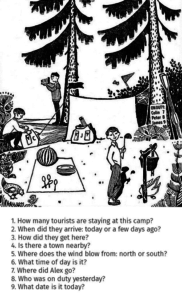This post is the fourth of a special “5 Teams Changing Career Education” series, featuring Q&A with the EdSim Challenge finalists. These solutions demonstrate the exciting potential for an ecosystem of next-generation simulations to strengthen in-demand career skills.
Our fourth post features a Q&A with Justin Barad, Founder & CEO of Osso VR. Osso VR is a highly-mobile surgical training platform that enables healthcare professionals to practice cutting edge techniques through realistic, hands-on simulations.
Describe your first experience with VR or AR. What aspect of it did you find most compelling
My first experience with VR was completely transformative. It was the Oculus DK1 Tuscany demo, where you find yourself in a peaceful villa in Italy. I was able to get the demo working with some discontinued hand tracking controllers and once I was able to get my hands into the virtual world I realized just how important this technology was going to be for our field. I think what struck me the most about how unique this initial experience was is that my memory of that first demo is not something I witnessed passively, but something that actually happened to me. Even now writing about it I have a memory of being in that villa, like it was yesterday. It’s something that is completely unique to VR.
How will your concept help students prepare for future careers?
Our concept will help students prepare for future careers in three ways:
- Our realistic simulations will increase the likelihood that students will pursue careers in medicine and surgery they may not have previously been interested in. For example, in my field of orthopaedics, women are underrepresented by a shocking degree. As of 2011, 13% of orthopaedic surgery residents were female. In a prospective analysis in the journal Orthopaedics entitled: “Factors Affecting Interest in Orthopedics Among Female Medical Students: A Prospective Analysis,” the authors found that increasing exposure to orthopaedics to medical students before an applicant made their career selection improved their likelihood of picking that career. Through VR training we are able to provide that exposure to an unprecedented degree and in doing so address a critical issue that is endemic in many healthcare technical careers.
- Osso’s simulations will give students the technical skills they need to rapidly excel as they prepare and ultimately pursue their healthcare career aspirations. I am confident that we will see more and more VR simulations used in classrooms and on college campuses in formal curriculums. The critical threshold to cross to accelerate the adoption of simulation technology is to enable more efficient and economical skill and knowledge transfer than traditional teaching—a threshold we believe we have crossed at Osso VR.
- Osso’s simulations will engage students by giving not just the ability to see and learn about a specific career path, but to DO it, which can completely change the context and energy of a classroom based discussion. Experiencing a subject in a highly interactive manner is far more impactful than observation alone, and will lead to more stimulating discussions and career interest.
What’s the biggest insight you’ve uncovered through the Challenge so far?
One of our immediate takeaways is that high schoolers are an incredible source of blunt and honest feedback, which is awesome. Another takeaway is that the other finalists in the EdSim Challenge are stellar with great leaders and technologies. I’m sure we will continue to collaborate in the years to come. Finally, I think we all have realized that we have only begun to scratch the surface of the importance of VR for knowledge transfer – ensuring that the next generation will be adequately equipped to deal with the rapidly expanding challenges awaiting us. It is exciting to see the U.S. Department of Education apply design thinking principles to increase engagement and skill development for children and young adults.

